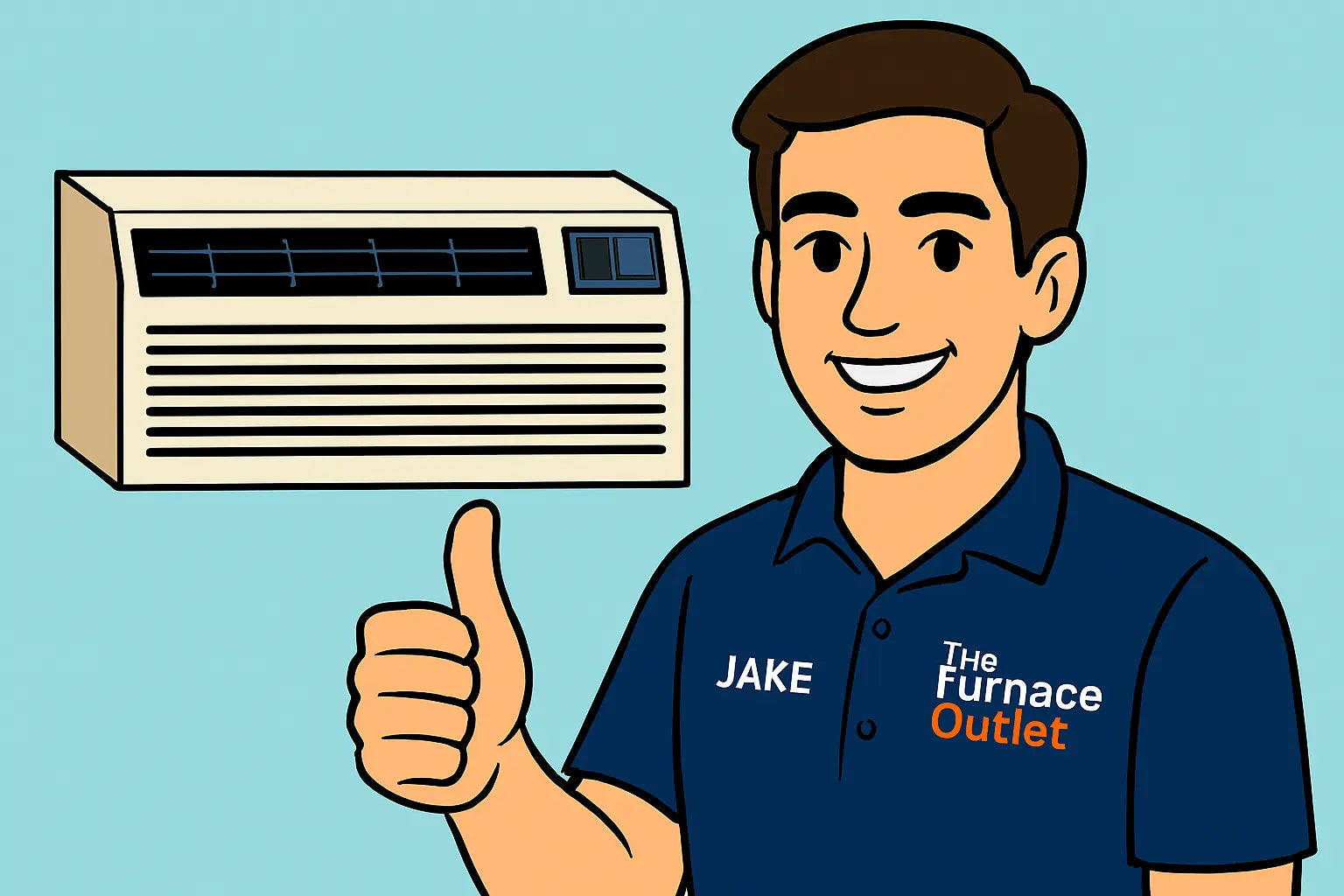Intro from Jake
alright, team—Jake here 👋. You got yourself an Amana Distinctions 14,700 BTU PTAC with a heat pump. Smart move. Whether you’re gearing up for hotel rooms, apartments, or just one sweet home setup, this unit’s gonna keep you comfy through the seasons.
Now, I know “install guide” sounds dry. But hang with me—I’ll break this down in plain English, give you all the steps, toss in a few “don’t do this unless you like calling electricians at midnight” tips, and even hook you up with some legit resources. Let’s get your PTAC installed the right way—without the stress. 💪
Step 1: Gather Tools and Prep the Space
First thing’s first—you need the right gear:
-
Level
-
Tape measure
-
Screwdriver/drill
-
Voltage tester
-
Safety gloves & glasses
And don’t forget: kill power at the breaker before you even look at wires. I’ve seen too many folks learn that lesson the hard way.
Why does prep matter so much? Because a bad install doesn’t just look sloppy—it kills efficiency. According to ENERGY STAR’s HVAC installation guide, poor HVAC installs can waste 20–30% of energy. Imagine paying for a third of your comfort to just vanish. No thanks.
Step 2: Install the Wall Sleeve
Your PTAC slides into a wall sleeve that supports it and seals the opening. If your space already has one, inspect it for cracks, warping, or rust.
-
Make sure the sleeve slopes slightly outward (about 1/4 inch). That lets condensation drain outside, not into your carpet.
-
Seal the perimeter with weatherproof caulk to prevent drafts.
Pro note: The ACHR News guide on PTAC installs shows just how much airflow clearance matters. Give your unit at least 24 inches inside and 36 inches outside for it to breathe.
Step 3: Electrical Setup (a.k.a. Don’t Wing This Part)
Your Amana unit needs a dedicated circuit, typically 208/230 volts. Double-check your breaker panel and match the receptacle with the unit’s power cord type.
-
Use a voltage tester before plugging in.
-
Never run extension cords—this unit pulls serious amps.
-
Secure wiring per local code. If you’re not comfortable, call a licensed electrician.
Trust me, this is one area you don’t want to freestyle. According to HVAC.com’s troubleshooting guide, improper wiring is one of the top reasons PTACs refuse to power on.
Step 4: Slide in the PTAC and Secure It
Now the fun part—get that heavy box in place:
-
With a buddy, slide the PTAC into the wall sleeve.
-
Check the fit and make sure it’s seated all the way in.
-
Tighten the mounting screws so it doesn’t rattle loose over time.
-
Install the front panel and filter.
Boom—looks like a finished install already, right? But hang tight, testing’s next.
Step 5: Test Operation (Cooling & Heating)
Fire it up and walk through these checks:
-
Cooling: Set the thermostat low, feel the cold air, check airflow.
-
Heating: Run the heat pump, then switch to electric backup. Both should deliver warm, steady air.
-
Listen: Is it humming smoothly, or rattling like a loose drum kit?
-
Drainage: Make sure condensation is flowing outside.
If you run into hiccups, don’t panic—most are easy fixes. Sometimes, the simplest things—like dirty filters—cause the biggest headaches.
Step 6: Maintenance Tips to Keep It Running Smooth
You’ve got it installed—now keep it humming:
-
Clean the filter monthly.
-
Vacuum coils every season.
-
Clear out the condensate drain.
-
Test both heat pump and electric backup yearly before extreme weather hits.
The ENERGY STAR Heating & Cooling Guide highlights that just keeping filters clean can cut energy use by up to 15%. Not bad for a five-minute job.
Wrap Up from Jake!
and that’s it—you’re officially a PTAC installer 💥. Feels good, right? From wall sleeve to wiring to firing it up, you’ve got the steps down. No mystery, no stress.
Now, if you don’t already own this powerhouse, or if you’re thinking of adding another one to keep the fam or your tenants happy, check out the Amana Distinctions 14,700 BTU PTAC with Heat Pump and 3.5 kW Backup. That’s the very model we’ve been talking about here—it’s a solid, reliable workhorse.
Need more advanced troubleshooting tips for this unit? Visit my guide: Mastering PTAC Care.
Take care of it, and it’ll take care of you. Jake out! ✌️😎







